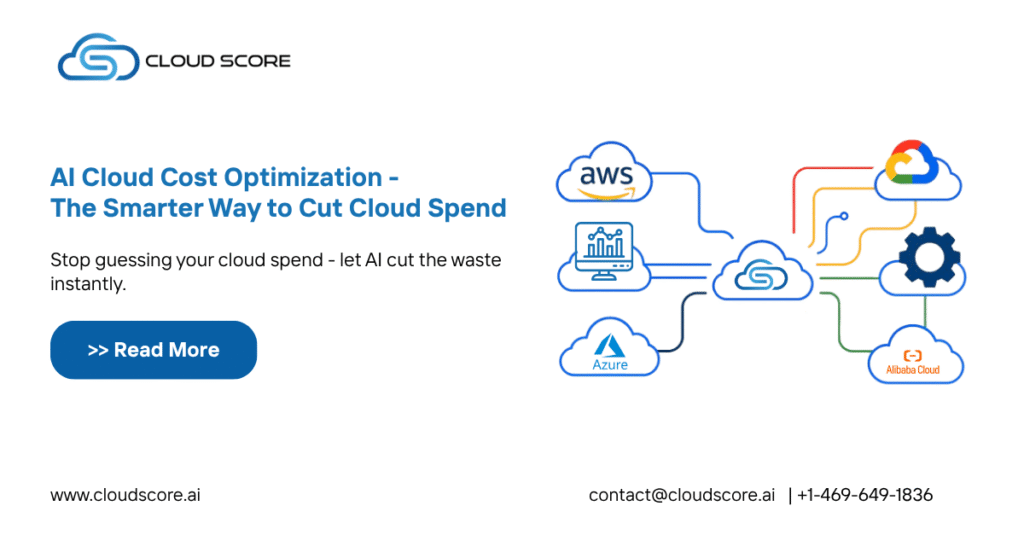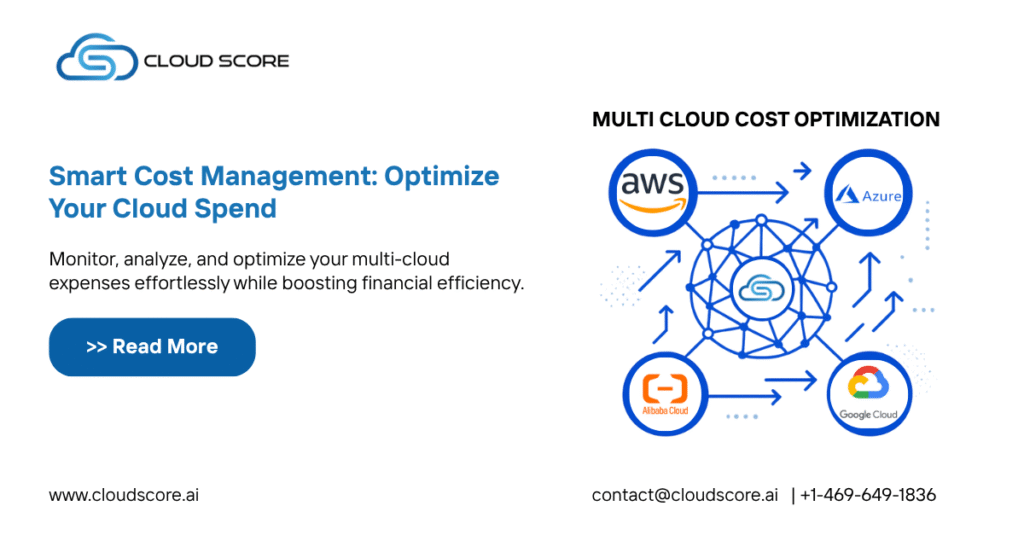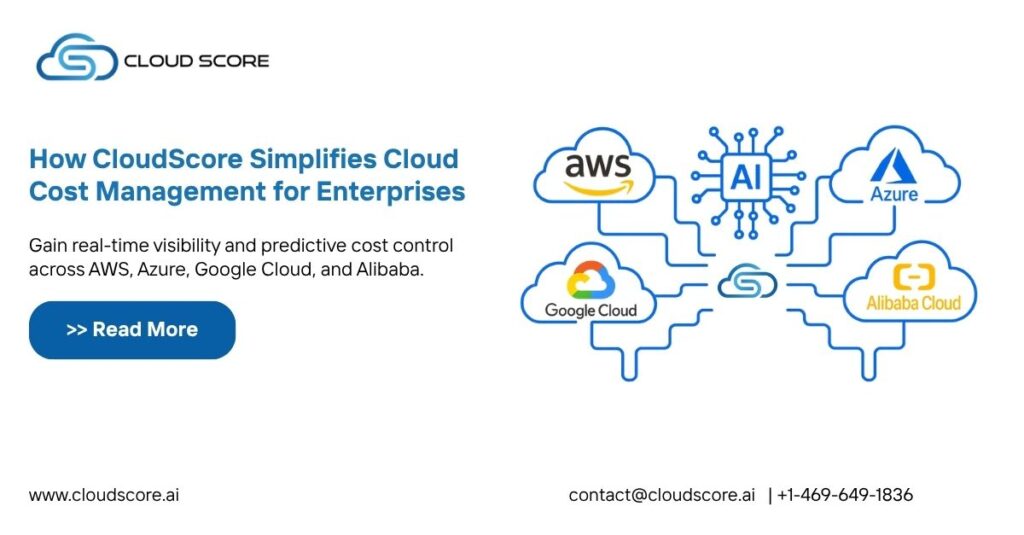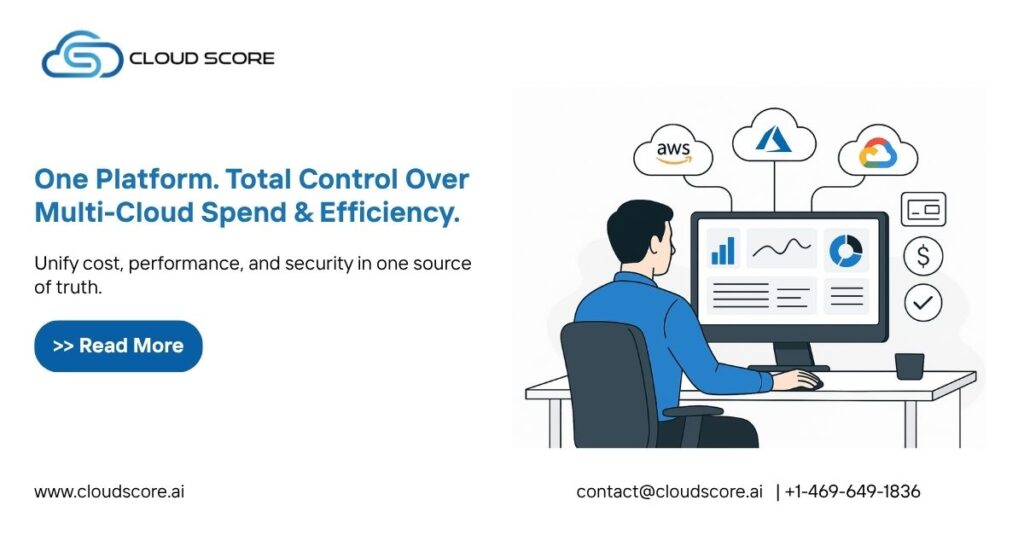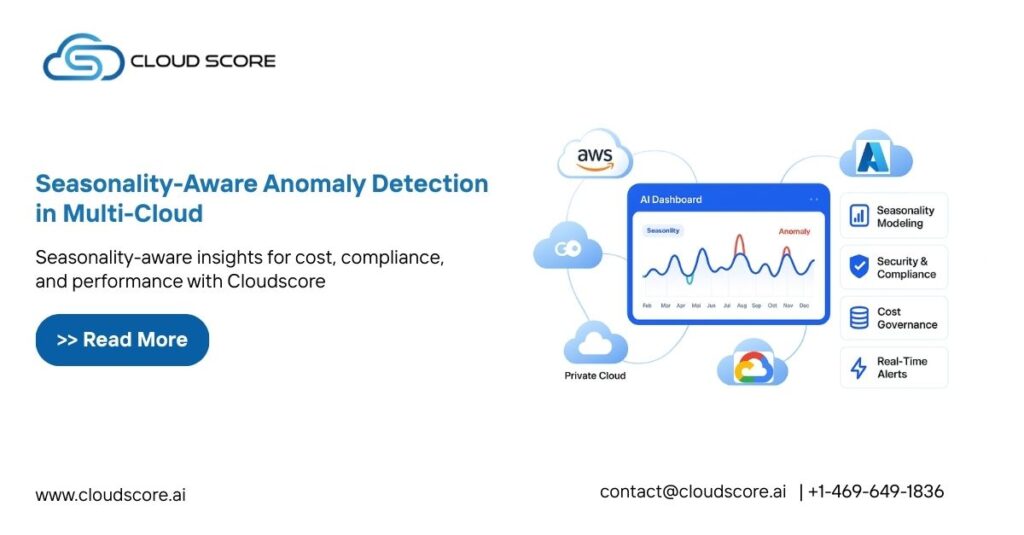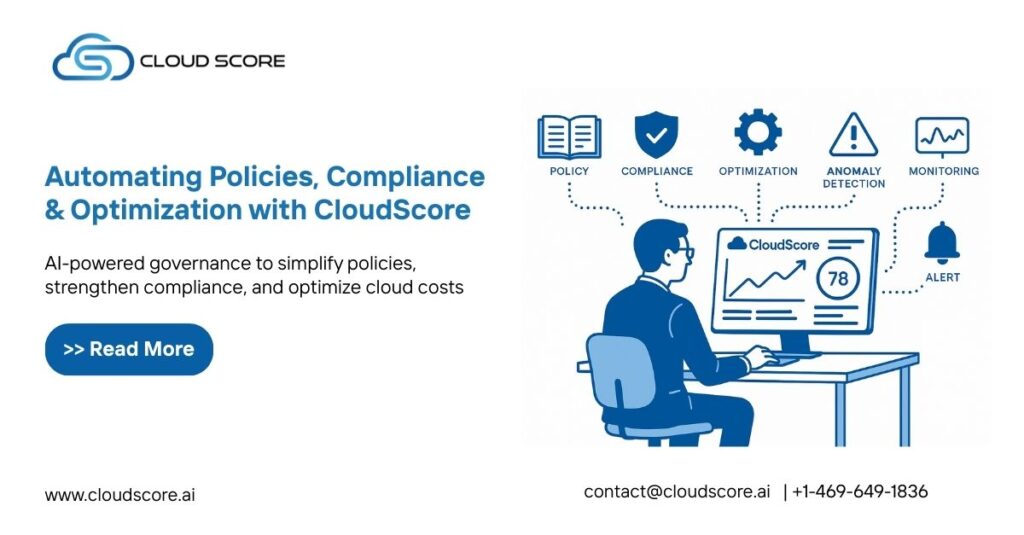AI Cloud Cost Optimization – How Intelligent Automation is Redefining FinOps
In today’s multi-cloud world, managing cloud costs has become a high-stakes challenge. From underutilized resources to unpredictable usage spikes, cloud spending can spiral out of control without intelligent monitoring. Enter AI Cloud Cost Optimization a transformative approach that blends automation, predictive analytics, and real-time visibility to help enterprises achieve financial efficiency and operational control. AI is not just automating cloud governance it’s redefining FinOps, giving businesses the intelligence they need to make smarter cloud investment decisions. What is AI Cloud Cost Optimization? AI Cloud Cost Optimization leverages algorithms, behavioral analytics and automated policies to identify inefficiencies and optimize cloud resource allocation.Instead of relying on manual reviews or static cost reports, AI systems continuously analyze patterns in usage, performance and billing, delivering real-time recommendations to reduce costs without compromising performance. AI-based FinOps tools like CloudScore use dynamic algorithms that automatically scale resources, shut down idle workloads and predict future spending patterns based on historical data. Key Benefits of AI Cloud Cost Optimization 1. Real-Time Cost Visibility AI-powered dashboards give organizations a granular view of their cloud expenses broken down by region, service, and department. This transparency helps teams pinpoint cost anomalies before they escalate. 2. Resource Right-Sizing AI continuously analyzes workloads and adjusts compute, storage, and network resources to prevent both over-provisioning and under-provisioning. 3. Predictive Spend Forecasting Forecasting models track historical usage to predict future expenses empowering finance teams to plan budgets and avoid surprise billing. 4. Anomaly Detection & Alerts AI can instantly detect irregular spikes in cloud consumption and trigger alerts, ensuring proactive intervention and eliminating unnecessary financial waste. 5. Multi-Cloud Cost Governance With most enterprises operating across AWS, Azure, and Google Cloud, AI provides a centralized governance framework ensuring compliance, standardization, and policy enforcement across all platforms. How AI Transforms Traditional FinOps Traditional FinOps relies heavily on manual reporting and static analysis, which often leads to delayed cost control actions. AI-driven systems, however, operate continuously and autonomously offering 24/7 cloud monitoring and actionable intelligence. By integrating with APIs from major cloud providers, AI FinOps platforms like CloudScore automatically: Identify cost-saving opportunities (unused instances, over-provisioned VMs) Recommend optimal pricing models (Reserved vs. On-Demand vs. Spot) Enforce tagging compliance and governance Provide visual cost breakdowns per project or department This constant feedback loop creates a self-optimizing cloud environment, where cost efficiency is built into every deployment. Real-World Impact of AI Cloud Cost Optimization Companies that have adopted AI-driven cost optimization strategies report: Up to 30% reduction in annual cloud expenditure 25–30% improvement in resource utilization efficiency Faster ROI through continuous cost governance By automating decision-making, AI reduces dependency on human intervention and ensures financial accountability across engineering, DevOps, and finance teams. Future of AI in Cloud Cost Management The next evolution of FinOps will move toward self-healing cloud ecosystems where AI not only monitors but also executes autonomous cost adjustments in real time.Expect to see tighter integrations between FinOps and Cloud Governance platforms, ensuring that every byte of cloud data is optimized for both performance and cost. As organizations continue to scale cloud adoption, AI Cloud Cost Optimization will no longer be a luxury it will be a strategic necessity for sustainable digital growth. Outcome AI Cloud Cost Optimization is transforming how businesses view and manage their cloud investments. By automating monitoring, forecasting, and governance, companies can reduce waste, maximize ROI, and strengthen their financial posture in an increasingly digital economy. If your organization is seeking smarter ways to manage cloud spend, it’s time to embrace AI-driven FinOps where cost efficiency meets intelligent automation. Start optimizing your cloud costs with CloudScore’s AI-powered FinOps platform.Gain full visibility, automate governance and forecast spend intelligently. Request a Demo | Start Your Free Trial | Contact Our Experts See more Blogs: Smart Cost Management | Simplify Cloud Costs | Automated FinOps Platform | Multi-Cloud Spend | Cost Efficiency | Cloud Security | Dynamic Optimization | Seasonality Insights | Cloud Governance | Sustainability Reporting | Cloud Infrastructure | Predictive Analytics | Integrating FinOps | Forecasting | Automated Cost Management | Cloud Cost Optimization

